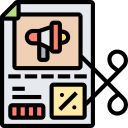Copywriting Tips for Interior Designers: Words That Make Spaces Sell
Chosen theme: “Copywriting Tips for Interior Designers.” Welcome to a creative workspace where strategy meets style, and every sentence works as hard as your best floor plan. Discover practical, human-centered techniques to describe textures, translate mood boards into messages, and turn browsers into booked consultations. If this resonates, subscribe for weekly prompts, swipeable formulas, and real designer examples you can adapt today.

Know Your Ideal Client Like a Perfectly Measured Room
Interview, Observe, and Empathize
Spend an afternoon listening to the words your clients actually use when they describe their homes and hopes. Note phrases like “light without glare” or “calm in a busy life,” then mirror them in your copy. One boutique studio discovered parents kept saying “no more toy spillover,” which became a memorable tagline and increased consultation requests from young families. Share your most revealing client quote in the comments to help others learn.
Turn Pain Points Into Promises
Translate frustrations into outcomes. If clients worry about decision fatigue, promise a curated, step-by-step process that reduces choices and increases confidence. If they fear budget creep, highlight transparent milestones and price clarity. A designer in Austin reframed “overwhelmed by samples” into “pre-edited palettes that feel like home,” which instantly made prospects feel seen. Comment with a common client frustration you hear and we’ll suggest a positioning line.
Define Your Niche Without Boxing Yourself In
Niches help copy feel specific and unmistakable. “Sustainable Scandinavian in small city spaces” tells a sharper story than “interior design for everyone.” Pair aesthetics with audience or context—first-time homeowners, heritage restorations, or wellness-focused rentals. Leave room for growth by focusing on values and outcomes, not only styles. Subscribe to get a worksheet that helps you craft a niche statement you can test on your About page.

Headlines That Open Doors (and Calendars)
Lead With Benefits, Not Just Style Words
Replace vague phrases with outcomes your clients can feel. Instead of “Timeless Interiors,” try “Timeless Interiors for Busy Families That Hide Clutter and Amplify Calm.” A studio swapped “Elevated Spaces” for “Design That Cuts Decisions in Half and Doubles Your Confidence,” which boosted inquiries within a month. Post two headline options in your stories and ask followers to vote; use their language to refine the winner.
Use Specifics to Anchor Imagination
Numbers and concrete images help readers picture the result. “A lighting plan that creates three moods per room” evokes more than “better lighting.” Cite real outcomes, like “We reclaimed 28 square feet with custom storage,” without overpromising. One designer showcased “Seven Weekend-Friendly Updates” and saw newsletter open rates climb. Share your most specific project result below to turn it into a compelling headline together.
Test, Tweak, and Trust the Data
Headlines are hypotheses. Test variants in your email subject lines, Instagram polls, or homepage hero. Track which version drives bookings, not just clicks. A coastal studio learned “Breezy, Low-Maintenance Beach Homes” outperformed “Coastal Comfort” with locals, likely because maintenance is a real concern. Keep a simple spreadsheet and iterate monthly. Subscribe to get our headline testing template and a seasonal headline idea bank.



Voice and Tone: From Mood Board to Message
01
Define three voice traits—perhaps grounded, refined, and reassuring—and pair each with do’s, don’ts, and example sentences. Align adjectives with your visual style to avoid brand dissonance. If your spaces are calm, let your copy breathe with shorter sentences and gentle verbs. Share your three traits in the comments and we’ll suggest phrase swaps to reinforce them on your homepage.
02
Tone flexes while voice stays steady. A blog post can sound conversational, while a proposal reads precise. Keep consistent vocabulary for signature elements—your process names, room typologies, and favorite materials. A designer renamed their consultations “First Walkthrough” across all channels, which improved recognition and reduced confusion. Subscribe to receive a tone-switching checklist for social, email, and project pages.
03
Small phrases move big outcomes. Replace “Submit” with “Book My Consultation” or “Send My Project Details.” Add helper text near forms: timeline ranges, budget guidance, and privacy assurances. One studio clarified response times and saw drop-offs decrease significantly. Comment with a form label you are unsure about, and we’ll propose a warmer, clearer alternative anchored in your brand voice.
SEO Without Losing Aesthetics
Look for terms tied to intent: “small condo storage solutions,” “pet-friendly luxury fabrics,” or “Scandinavian loft designer Brooklyn.” Sprinkle them in headings, image alt text, and meta descriptions without stuffing. A designer added location and style specifics to project titles and started appearing in local searches. Share one phrase your clients say, and we’ll transform it into a natural keyword cluster.
Use descriptive subheads, short paragraphs, and captioned images. Include internal links that guide readers from portfolio to service to contact. Instead of “Project 12,” name it “Light-Lifting Remodel for a North-Facing Brownstone.” This helps both humans and crawlers understand context. Subscribe to get a minimalist on-page SEO checklist tailored for design studios.
Fold neighborhood knowledge into your copy: building quirks, common room sizes, or rules relevant to co-ops and heritage listings. Mention service areas naturally in footers and About pages. One studio earned trust by adding a line about navigating historic district approvals. Comment with your city, and we’ll suggest a localized sentence that feels organic, not forced.
Portfolio Pages That Convert
01
Lead With Purpose and Constraints
State the client’s goal, constraints, and your role. “A young family needed durable surfaces and hidden storage in a rental-friendly makeover; we focused on reversible upgrades and modular pieces.” This frames your expertise without sounding salesy. End with a short prompt: “Curious how we adapt rentals?” and link to your consultation page. Share your favorite constraint you solved; we’ll help craft the opening paragraph.
02
Curate, Don’t Overload
Select images that progress logically—from wide to detail, from function to feeling. Each image earns its place with a caption explaining why it matters. Include a short materials note if it informs maintenance, sustainability, or comfort. A studio reduced project photos by a third and saw time-on-page increase. Subscribe for our caption swipe file for textiles, lighting, and joinery.
03
Place Calls to Action Where Attention Peaks
Add a gentle invitation after the most emotionally resonant moments: “Book a design walkthrough,” “Request a sample mood board,” or “Get our pre-renovation checklist.” Keep buttons consistent across projects to build recognition. One designer nudged bookings by positioning a CTA right after the dining room reveal. Comment with your current CTA, and we’ll propose three stronger variants.
Irresistible CTAs and Lead Magnets for Designers
Trade email addresses for truly useful resources: a mini style quiz, a renter-safe upgrade guide, or a seasonal lighting checklist. Make the design of the PDF match your brand to reinforce desirability. A studio’s “Weekend Styling Formula” became their top signup driver within a quarter. Share your lead magnet idea and we’ll help refine its promise line to increase conversions.

